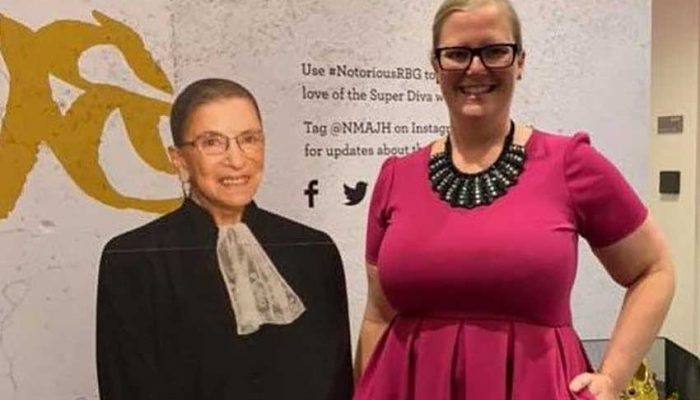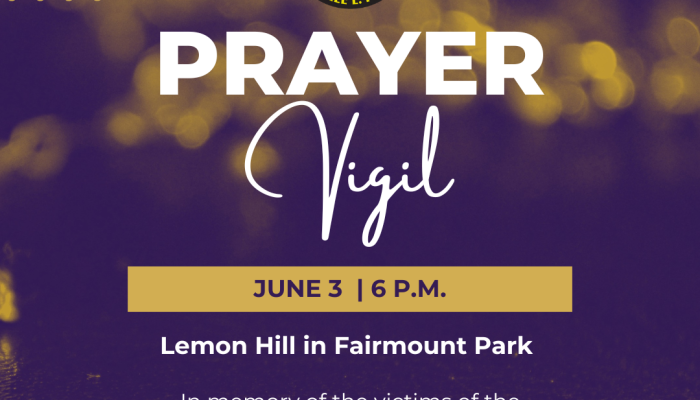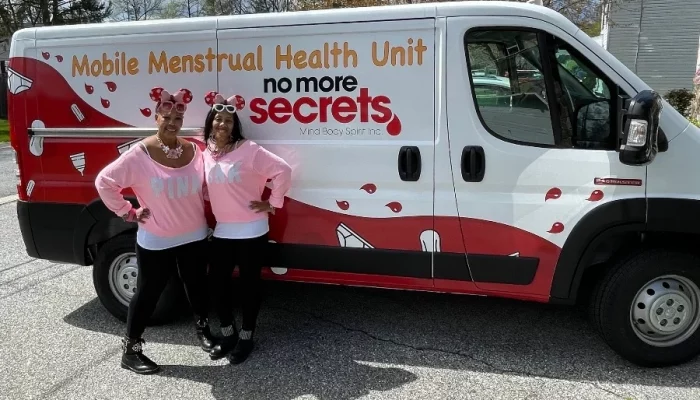This blog post was written by Susan Crosby, Esq.
Last October the Philadelphia Commission for Women launched a year-long commemoration of the 19th amendment and our exploration of SuffrageRacePower with the screening of the film “The Notorious RBG: The Life and Times of Ruth Bader Ginsburg.” Few figures have as remarkable a body of work and lived experience as Justice Ginsburg. She leaves behind a transformational social justice legacy that traverses gender, race, and the law in the pursuit of equality. It is important to recognize Justice Ginsburg, not just as a role model, a feminist, a trailblazer, and an icon, but for her enduring role as a protector of freedom and equality. We also celebrate her life as an attorney and jurist.
When deciding which of her many writings to share, I struggled. Should I choose from her lectures at Rutgers, her briefs and oral arguments before the Supreme Court on gender equality and women’s rights, or do I choose from the myriad of her opinions from the District Court of Appeals and the Supreme Court. Ultimately, I chose one of her dissents. We all know that later in her tenure, as the court became more conservative, her dissents became more common and strident. She once said that, “dissents speak to a future age. It’s not simply to say, ‘My colleagues are wrong, and I would do it this way.’ But the greatest dissents do become court opinions and gradually over time their views become the dominant view. So that’s the dissenter’s hope: that they are writing not for today, but for tomorrow.” Of those recent dissents, I chose her dissent in Shelby County Alabama v. Eric Holder, a 2013 Voter’s Rights Act case.
First a little background: the Voting Rights Act of 1965 was enacted to address racial discrimination in voting. Section 2 bans any “standard, practice, or procedure” that “results in a denial or abridgement of the right of any citizen … to vote on account of race or color,” applies nationwide, and is permanent. Other sections apply to some parts of the country defined in Section 4 as “covered jurisdictions” as states or political subdivisions that had tests or devices as prerequisites to voting and had low voter registration or turnout. As a complement, Section 5 provides that no change in voting procedures can take effect in covered jurisdictions until approved by federal authorities, known as “preclearance.” The designation of covered jurisdictions and preclearance made the Voting Rights Act a living law that adjusted to current conditions.
Shelby County, in the covered jurisdiction of Alabama, sought a declaratory judgment that Sections 4 and 5 were unconstitutional. The district court upheld the Act and the District of Columbia Circuit affirmed. But a 5-4 Supreme Court reversed, finding Section 4 unconstitutional, and thus eviscerating the Voting Rights Act. Justice Ginsburg wrote the dissent for the minority.
Leaping to resolve Shelby County’s facial challenge without considering whether application of the Voting Rights Act to Shelby County is constitutional, or even addressing the Voting Rights Act’s severability provision, the Court’s opinion can hardly be described as an exemplar of restrained and moderate decision making. Quite the opposite. Hubris is a fit word for today’s demolition of the Voting Rights Act.
Instead, the Court strikes [the Voting Rights Act’s] coverage provision because, in its view, the provision is not based on “current conditions.” It discounts, however, that one such condition was the preclearance remedy in place in the covered jurisdictions, a remedy Congress designed both to catch discrimination before it causes harm, and to guard against return to old ways. Volumes of evidence supported Congress’ de-termination that the prospect of retrogression was real. Throwing out preclearance when it has worked and is continuing to work to stop discriminatory changes is like throwing away your umbrella in a rainstorm because you are not getting wet.
The sad irony of today’s decision lies in its utter failure to grasp why the Voting Rights Act has proven effective. The Court appears to believe that the Voting Rights Act’s success in eliminating the specific devices [existing] in 1965 means that preclearance is no longer needed. With that belief, and the argument derived from it, history repeats itself. The same assumption—that the problem could be solved when particular methods of voting discrimination are identified and eliminated—was indulged and proved wrong repeatedly prior to the Voting Rights Act’s enactment.
Beyond question, the Voting Rights Act is no ordinary legislation. It is extraordinary because Congress embarked on a mission long delayed and of extraordinary importance: to realize the purpose and promise of the Fifteenth Amendment that granted the right to vote to Black men, subsequently denied by Jim Crow era barriers. For half a century, a concerted effort has been made to end racial discrimination in voting. Thanks to the Voting Rights Act, progress paved by the blood and sweat of civil rights activists continues to beckon those who thirst for democracy and the promise of a more perfect union.
Unlike prior statutes, which singled out particular tests or devices, the Voting Rights Act is grounded in Congress’ recognition of the “variety and persistence” of measures designed to impair minority voting rights. In truth, the evolution of voting discrimination into more subtle second-generation barriers is powerful evidence that a remedy as effective as preclearance remains vital to protect minority voting rights and prevent backsliding.
It was the judgment of Congress that “40 years has not been a sufficient amount of time to eliminate the vestiges of discrimination following nearly 100 years of disregard for the dictates of the 15th amendment and to ensure that the right of all citizens to vote is protected as guaranteed by the Constitution.” That determination of the body empowered to enforce the Civil War Amendments “by appropriate legislation” merits this Court’s utmost respect. In my judgment, the Court errs egregiously by overriding Congress’ decision. (Please note the opinion is abridged. A full version can be found here)
Justice Ginsburg knew the Court would be clearing a path for future challenges to the Voting Rights Act and she was right. In the eight years since Shelby, the Court has given more deference to State and Local voting measures that remove voters from the rolls and create gerrymandered districts.
Ever vigilant in her fight for equal rights, her dissent in Shelby, decades of state and local voter suppression schemes before and since Shelby underscores the urgency of the passage of the John Lewis Voting Rights Act that would reinstate federal oversight of state election laws that provided protections from racial discrimination intended in the Voting Rights Act of 1965. In her dissent of Shelby Justice Ginsburg continues to speak to us and to future jurists.
In what has been termed her dying wish, she told her granddaughter, “My most fervent wish is that I will not be replaced until a new president is installed.” May we all be ever vigilant in fighting against oppression and may her memory be a blessing.
Susan Crosby is an attorney in the City of Philadelphia Law Department and is an officer of the Philadelphia Commission for Women.




